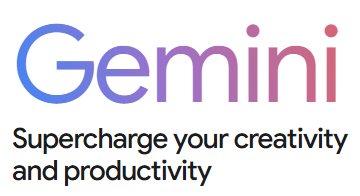Strategic Objective
Establish Phoenixtekk Foundation as a global hub for technology empowerment, providing discounted tech products, Microsoft technology consulting, and a collaborative platform for nonprofits, libraries, foundations, and social change organizations.
Step 1: Define and Launch the Initiative
A. Establish Clear Mission and Vision for Initiative
Mission:
Empower nonprofits globally by offering affordable access to cutting-edge technology, expert consulting, and a collaborative community that fosters digital transformation and innovation.
Vision:
Become the leading international nonprofit network and digital hub connecting nonprofit entities worldwide to transformative technology solutions and knowledge-sharing opportunities.
B. Program Naming and Branding
- Suggested Name: “Phoenixtekk Nonprofit Tech Network (PTN TechNet)”
- Develop clear branding (logo, tagline, visual identity) emphasizing empowerment, innovation, and community.
Step 2: Strategic Partnerships for Technology Discounts
A. Identify Target Partners
- Hardware Vendors: Dell, HP, Lenovo, Cisco
- Cloud and Software Providers: Microsoft, Amazon Web Services (AWS), Google for Nonprofits, Salesforce, Adobe
- AI & Emerging Tech Providers: OpenAI, Nvidia
B. Partnership Approach
- Form partnerships with established tech vendors (starting with Dell and Microsoft) to obtain special nonprofit pricing.
- Create formal proposals highlighting mutual benefits:
- Vendors: Increased brand presence in nonprofit sectors, CSR recognition, tax benefits.
- Phoenixtekk Foundation: Competitive pricing, exclusive products or bundles, sponsorship for events.
Example with Dell
- Offer Dell’s refurbished and new hardware products at discounted rates.
- Develop special nonprofit bundles (laptops, desktops, servers, peripherals, etc.).
- Provide co-branded community tech hubs or mobile classrooms (like your “Technology Bus Fleet”).
Example with Microsoft
- Microsoft 365 & Azure Nonprofit Credits: Leverage Microsoft’s nonprofit licensing discounts, Azure cloud credits, and training vouchers.
- Provide Microsoft technology consulting services (Intune, Entra ID, Microsoft 365), leveraging Phoenixtekk Foundation’s expertise and certifications.
- Organize Microsoft training and certification boot camps specifically designed for nonprofit IT teams.
Step 3: Consulting & Expert Access
A. Microsoft and Tech Consulting
- Leverage Phoenixtekk Inc.’s deep Microsoft technology expertise to offer affordable and specialized consulting services:
- Digital transformation roadmap consulting.
- Intune device management setup and training.
- Security audits and Azure cybersecurity implementation.
B. Blockchain & AI Workshops
- Host online and in-person workshops on blockchain basics, decentralized finance (DeFi), AI tools, and their nonprofit sector use cases.
- Provide certifications or badges verified by blockchain for credibility and authenticity.
Step 4: Build the Online Collaborative Community (Tech Portal)
A. Launch Online Platform
- Create an online portal that includes:
- Discounted tech product marketplace (powered by vendor partnerships).
- Community forums for collaboration, peer-to-peer learning, and resource sharing.
- Curated tech toolkits, training resources, and expert guides.
B. Features of the Community Portal
- Interactive forums with topic-focused discussions (Microsoft Tech, Blockchain, AI, Cybersecurity, Financial Literacy).
- Resources library: guides, tutorials, videos, best practices.
- Regular live Q&A webinars featuring Phoenixtekk and vendor experts.
C. Gamification & Incentives
- Achievement badges for community contribution and knowledge sharing.
- Monthly “Top Contributor” recognition with special benefits (discount vouchers, free consultations).
Step 5: Enhanced Member Benefits (Inspiration from “Quad”)
A. Membership Tiers
- Free basic membership: limited access to community resources.
- Premium membership (annual fee-based), providing:
- Greater discounts on tech products.
- Exclusive content access (in-depth guides, webinars, certification discounts).
- Personalized technology needs assessments.
- Waived administrative fees on select technology and services.
B. Personalized Tech Needs Assessment
- Offer detailed technology assessments to nonprofits to identify specific tech gaps and solutions tailored to their unique needs.
- Provide implementation guidance and support.
Step 6: Marketing and Outreach
A. Promotion Channels
- Social media campaigns (LinkedIn, Instagram, Facebook, YouTube).
- Partner-driven co-branding: webinars, workshops, podcasts.
- Collaboration with local and international nonprofit alliances.
B. Strategic Events
- Organize an annual virtual summit on nonprofit technology innovation, featuring high-profile speakers, networking sessions, and live product demos.
- Hackathons, workshops, and panels highlighting real-world nonprofit tech challenges and solutions.
Step 7: Legal and Compliance Considerations
A. Compliance Framework
- Ensure all discount offerings and partnerships comply with IRS 501(c)(3) regulations.
- Develop clear, transparent processes for eligibility verification for discounted technology products.
B. Vendor Agreements
- Draft clear vendor agreements specifying pricing, product availability, partnership terms, marketing, and co-branding guidelines.
Step 8: Funding and Sustainability
A. Diversify Revenue Streams
- Administrative fees for tech product transactions (minimal, transparent).
- Membership fees for premium services.
- Vendor sponsorships and grants from tech companies.
- Grants and funding from governments and foundations (aligned with digital inclusion goals).
B. Reinvestment
- Continuously reinvest revenue to enhance the online portal, expand vendor partnerships, and improve program delivery.
Step 9: Measure, Report, and Expand
A. Metrics of Success
- Number of nonprofits served.
- Amount saved through discounts.
- User satisfaction and community engagement scores.
- Successful tech implementations.
B. Annual Impact Report
- Produce annual transparent reports (blockchain-verified for credibility) demonstrating program impact, community growth, and benefits delivered to nonprofits globally.
Timeline for Implementation:
- Months 1-3: Strategic planning, initial vendor discussions, branding, online platform development.
- Months 4-6: Formalize initial partnerships (Dell, Microsoft), beta launch of online community, first workshops.
- Months 7-9: Full platform rollout, expand community, continuous marketing campaign, membership structure launch.
- Months 10-12: Scale outreach, annual impact report, first annual summit.
Example Implementation (Dell Partnership):
- Secure an agreement with Dell to provide discounted hardware for nonprofits.
- Bundle discounted hardware (e.g., laptops, servers) with Phoenixtekk Foundation training (Microsoft certification workshops, cybersecurity assessments).
- Create co-branded promotions: “Dell-Phoenixtekk Nonprofit Empowerment Pack”—a complete package of hardware and professional consulting services at an exclusive nonprofit price.
Conclusion:
By following this detailed plan, Phoenixtekk Foundation will effectively leverage strategic partnerships (e.g., Dell, Microsoft), in-house technology expertise, and community-building strengths to provide tangible, impactful technology support to the global nonprofit community. This positions Phoenixtekk Foundation as a leader in nonprofit technology enablement, mirroring and exceeding the successful model TechSoup.org established, while uniquely adding your specializations in modern tech innovation.




